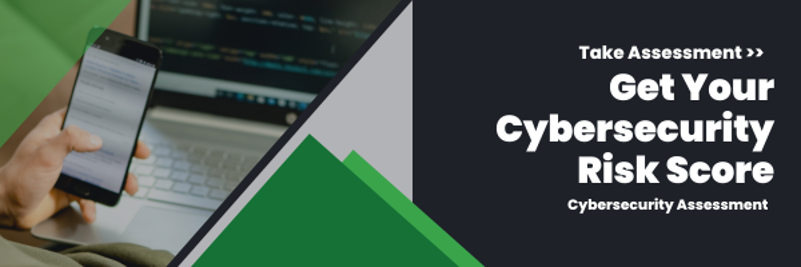Cybersecurity conversations in mid-size companies often start with tools. “We need a firewall.” “Let’s install endpoint protection.” “Should we move backups to the cloud?”
Although these questions are valid, they miss the bigger picture. Tools are necessary, but tools alone don’t make you secure. Without a strategy to guide them, they’re a scattered collection of defenses, often leaving dangerous gaps.
A strong cybersecurity strategy is intentional, layered and business-driven. It ensures that every technology decision protects the business, supports compliance and aligns with growth goals.
Read: The True Cost of a Cyber Attack: What Mid-Size Firms Need to Know
Step 1: Start with a Risk Assessment
The foundation of any effective cybersecurity strategy is a risk assessment. This crucial step identifies vulnerabilities, prioritizes them based on business impact and creates a baseline for improvement.
A proper risk assessment should answer:
- Where is our most sensitive data stored, and who has access?
- What would happen if this data were stolen, encrypted or exposed?
- Which systems are most critical to daily operations?
- What compliance requirements apply to us?
- Which vulnerabilities present the highest likelihood of attack?
Step 2: Embrace a Layered Defense Approach
Cybersecurity isn’t about one silver bullet. It’s about creating multiple layers of defense so that if one fails, others still protect you. For mid-size companies, this means:
- Perimeter security: Firewalls, secure VPN access and intrusion detection to block external threats.
- Endpoint protection: Antivirus, patch management, encryption and device control.
- Identity and access management: Strong password policies, multi-factor authentication (MFA) and role-based access controls (RBAC).
- Data safeguards: Encrypted backups, regular testing of recovery processes and access logging.
- Monitoring and detection: 24/7 monitoring to catch unusual activity before it spirals.
- Employee defense: Ongoing training, tabletop exercises and clear security policies.
Step 3: Make Cybersecurity a Leadership Priority
Cybersecurity isn’t just an IT function – it’s a business priority. Executives need to treat cyber risk the same way they treat financial audits, legal compliance or safety standards. When leadership embraces cybersecurity, it shifts from being a back-office IT project to becoming a strategic enabler of growth.
For leadership, this means:
- Reviewing cybersecurity risk as part of regular board or executive meetings
- Connecting cybersecurity goals to business outcomes
- Approving budgets based on risk reduction and ROI
- Holding IT accountable for results that matter
Step 4: Assign Ownership and Accountability
Even the best plans fail without accountability. Too many mid-size companies assume “IT is handling it,” but when everyone is responsible, no one is responsible.
This is where many firms fall short. IT managers are often too focused on daily support tasks, and outside consultants tend to drop off after delivering their recommendations. What’s needed is executive-level ownership.
That’s why a fractional CIO model is so powerful for mid-size companies. Instead of leaving cybersecurity in the hands of technicians, a fractional CIO:
- Takes responsibility for the entire strategy
- Bridges the gap between technical work and executive oversight
- Ensures projects get completed, not only discussed
- Communicates risk in terms that executives understand
Step 5: Build a Roadmap and Evolve Over Time
Cybersecurity is not a “set it and forget it” project. Threats evolve, compliance requirements change and businesses grow. A good strategy is supported by an IT roadmap that evolves with the company.
An IT roadmap should:
- Prioritize the most significant risks first
- Lay out short-, medium- and long-term initiatives
- Define milestones tied to measurable outcomes
- Build in regular reviews and updates
Compliance as a Byproduct of Strategy
Mid-size companies often scramble to meet compliance requirements. But here’s the truth: compliance doesn’t have to be painful.
When you build a cybersecurity strategy around risk management and layered defense, compliance often becomes a natural byproduct. Instead of rushing to check boxes, your systems and processes are already aligned with the frameworks auditors look for. This not only reduces audit stress but also creates a stronger overall security posture.
Thriveon’s Proven Model for Mid-Size Companies
Cybersecurity tools are important, but without a strategy, they’re like locks on doors with open windows. Mid-size companies can’t afford to leave gaps.
At Thriveon, we’ve seen countless mid-size businesses stuck in reactive IT cycles – constantly firefighting, overpaying for tools and still feeling insecure. Our approach is different.
We combine fractional CIO leadership to provide executive-level oversight and accountability with proactive IT management to implement and monitor cybersecurity standards. The result? Our clients move from fear and uncertainty to confidence and control. Cybersecurity is no longer a distraction – it becomes a foundation for efficiency, profitability and growth.
Request a consultation now for more information, and check out our next blog on the role of a Fractional CIO in cybersecurity.

